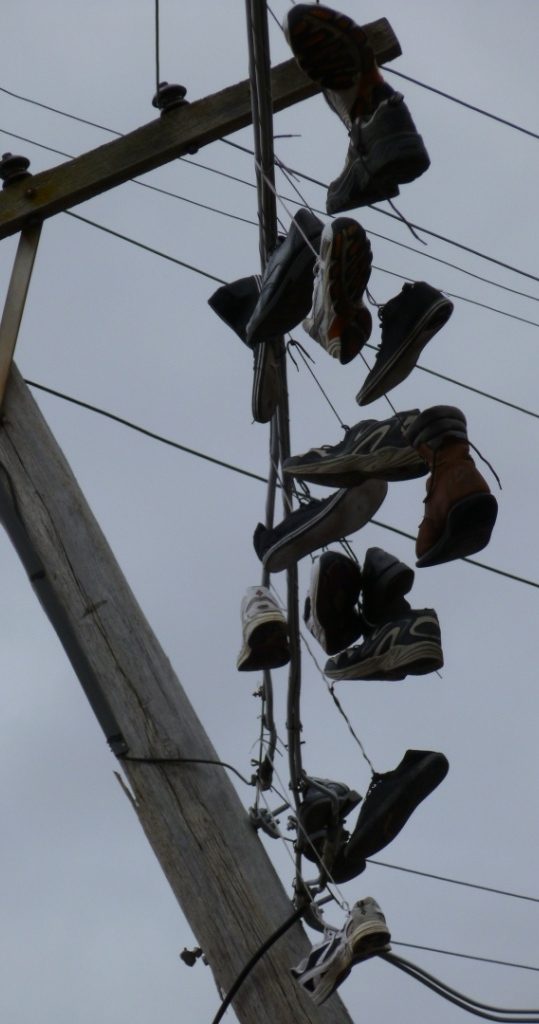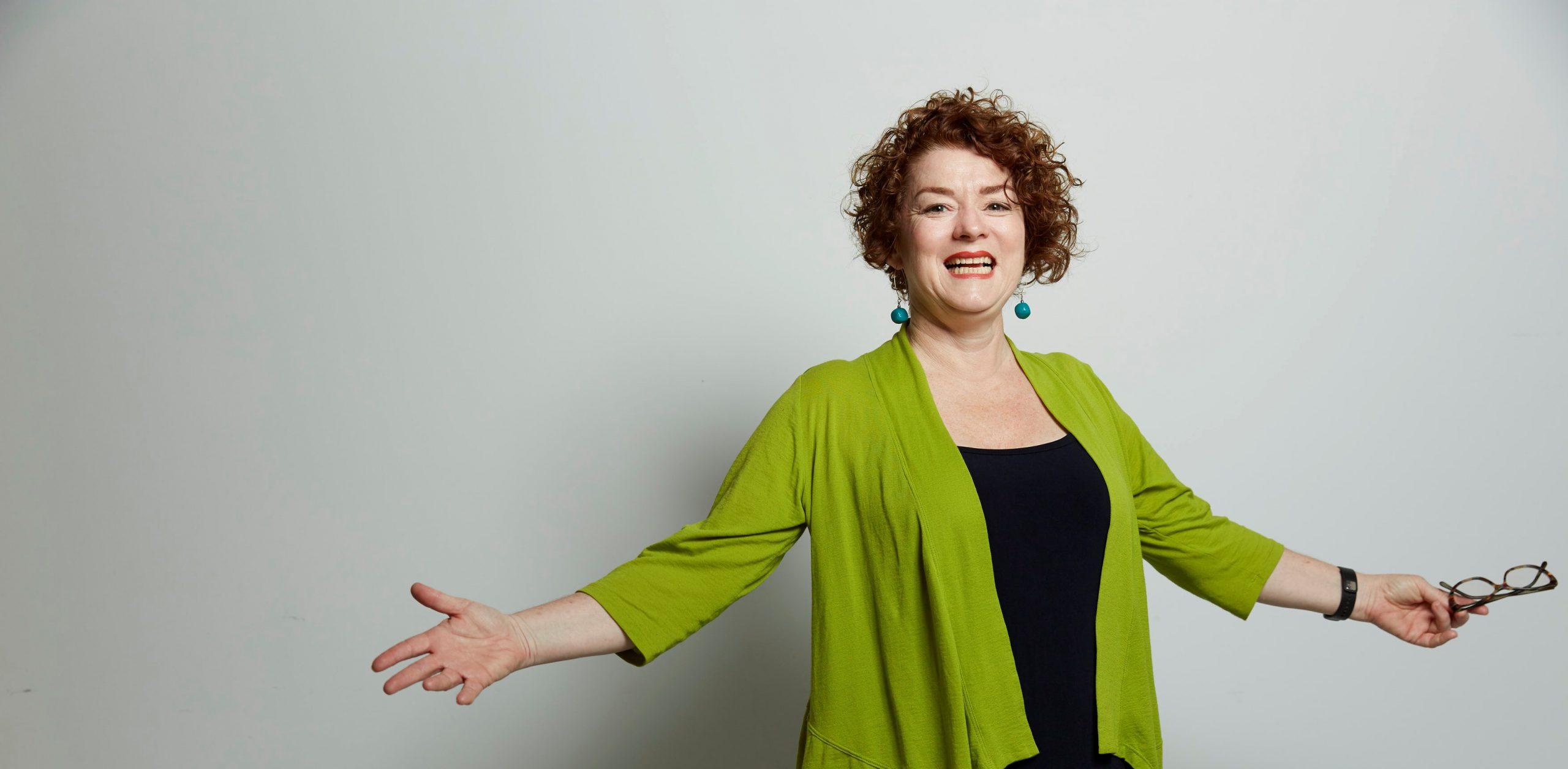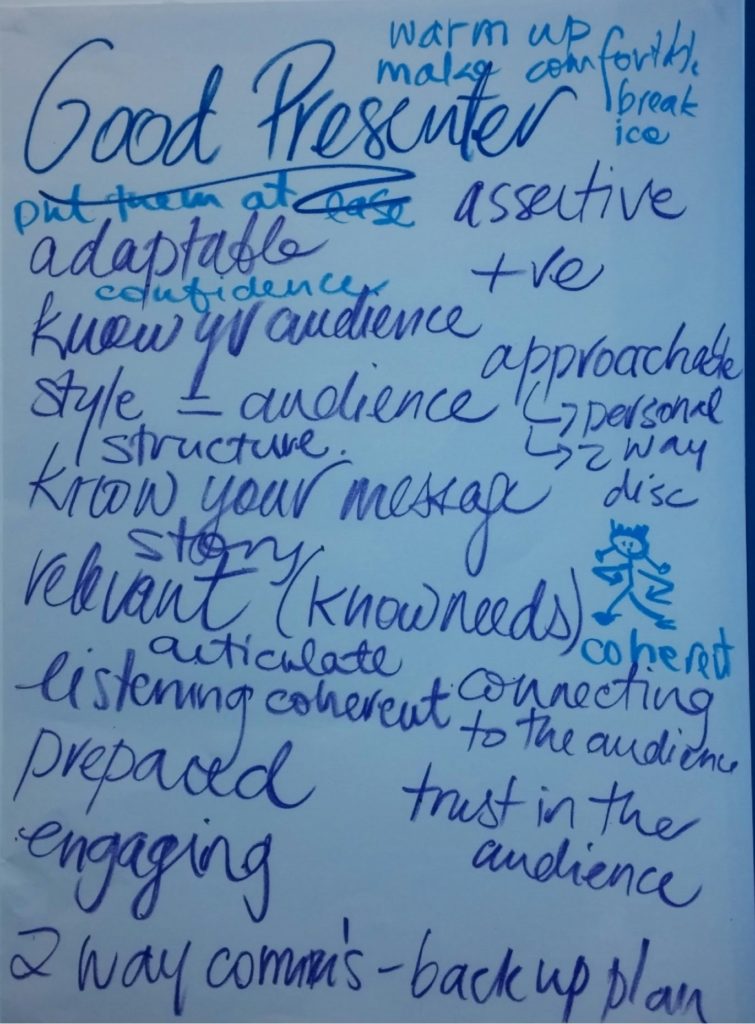
Mariangela (Mary) Casadei has been working in analytics for “a long time”.
Mary’s career began in statistics, in Italy. She’s moved through a number of industries, and now leads a team of clever analysts and scientists questing to find simple explanations for the complex work they do.
She speaks of ruthless prioritising, of how changing organisations teaches you good life lessons, and the importance of de-stressing.
Here’s a transcript of the episode.
The transcript
Ladies and gentlemen, today my guest is Mariangela (Mary) Casadei who’s been working in analytics for a long time.
Mariangela Casadei: Too long.
Cindy Tonkin: Too long? You don’t want to say? It’s like, never ask a woman her age?
Mariangela Casadei: Twenty-five, I would say.
Cindy Tonkin: Really? Yeah, yeah, cool. So, you’ve seen lots of organizations and lots of different analytics teams in that space.
Mariangela Casadei: Yeah.
First job
Cindy Tonkin: Where did you start? What was your first job?
Mariangela Casadei: My first job?
Cindy Tonkin: Yeah.
Mariangela Casadei: So, first of all, my name is Mariangela.
Cindy Tonkin: Mariangela?
Mariangela Casadei: Because on LinkedIn is actually my full name. My first job was out of Uni in Bologna in Italy. Bologna is the oldest northern European university town, beautiful town. And I did a small job actually for HR of the university, and it was doing a survey around different units of the university. It was quite interesting. It was just a short assignment.
Mary Casadei: And then, from there my first real job was working in software. SPSS at the time, which is now IBM. And that’s where I pretty much took off because the next 16 years was working with a large software organization, which is SaaS.
Cindy Tonkin: Wow.
Mariangela Casadei: Yes.
Cindy Tonkin: And you’ve worked in the analytics space basically since SaaS?
Mariangela Casadei: Pretty much.
Cindy Tonkin: What was your university degree in?
Mariangela Casadei: Economic and Statistics.
Cindy Tonkin: Oh, okay, cool. So, at that point, there was no analytics you could study as such. You had to study the basis
Mary Casadei: Yeah.
Cindy Tonkin: Nice.
Mary Casadei: Yes, yes.
Working smarter: Ruthless prioritisation
Cindy Tonkin: Excellent. So, Mary, the first question I’m going to ask you is about how you work smarter. What are the things you do, the routines you have in your life to work smarter?
Mariangela Casadei: This is a particularly relevant topic. At the moment, it really goes down to prioritizing the work you do. And actually, ruthless prioritization, it’s what we do. But to go back to “what is the question that we’re trying to answer, and is it gonna have an impact or not?” So, you’re going through that process and say, “Is it gonna make a difference?” Because stakeholders will come to you, as you know, with a question some time. I wish –
Cindy Tonkin: How many birthdays are done in May?
Mariangela Casadei: I wish I actually had made a book of all the questions, especially in the last three years because some are hilarious. So, you really need to go, “Okay, is this question, first off all, is it a relevant question at this point in time with the business circumstances, and is it gonna move (as much as I hate the expression), is it gonna move the needle?”
“Is it gonna make an impact?” And then, once I have done that validation process, I will engage and I will obviously go through the process or sign up the analytics or the data scientists and work together with them to try to obviously answer that question the best we can.
Mariangela Casadei: And the challenge is, it’s doing more with less at the moment, and working this new agile way of working, and –
Cindy Tonkin: And it can do your head in on some days, can’t it?
Mariangela Casadei: Very much so, especially because stakeholders are coming to you and they want the answer yesterday. So, yeah.
Cindy Tonkin: How do you keep your head straight? What do you do?
Mariangela Casadei: I don’t.
Cindy Tonkin: You don’t? So, you don’t work out? You don’t-
Mary Casadei: You know me. I have to say that some of the stakeholders actually become friends, and this is one of the things I leverage in my work. I build relationship. And in analytical work, in analytical people, that could be quite a differentiatior if you see what I mean.
Cindy Tonkin: I do, yes.
Mariangela Casadei: So, that gives you a little bit of leverage when you’re having … Especially senior stakeholder. So, you’re becoming your brand. And I have one differentiation. I have an accent and sometimes I hate it, but sometimes people actually remember, recognize you. And I know you’re developing the brand and the type of work you do and how you work. As you know, most of very Italian, so I can lose it very easily. I’m passionate.
Mary Casadei: So, there is a trademark, but I think I keep sanity with my team. My team is fantastic and they know the way I work. But I also think I build my relationship very consciously, so they know –
Cindy Tonkin: So that they have … so they won’t –
Mary Casadei: Yeah, right. I have some leeway
Cindy Tonkin: So, you can actually push back when they ask for something that really isn’t gonna move the needle.
Mary Casadei: Yeah. And they know when not to go.
Cindy Tonkin: Yeah, exactly. So, you’ve trained them well. That’s good.
Mariangela Casadei: I trained them well. Some of them, they’ve been working in this latest organization I’m working for, they know exactly when they can ask for something, and when they need to chill.
Cindy Tonkin: Not today. Yeah.
Mariangela Casadei: So, that’s when I’m not losing it.
Stressing less: yoga helps
Cindy Tonkin: And do you have exercise routines, or do you have a hobby that you do to kind of stress less?
Mariangela Casadei: Absolutely. I have to say, I’ve been on and off doing yoga for 10 years, let’s say. But then three years ago I went to Bali in a boat for a 50th birthday celebration, and I’ve been practicing since very regularly. Because obviously, I left my job in the software organization after a long time. That was a 16 years job and I wanted to challenge myself and I wanted to do something with eventually get back to me.
Mary Casadei: And since I start working for this large organization, obviously with the people that you know as well, as you say, keeping sanity is a challenge on a daily basis. So, yoga helps me a lot because I breathe and I meditate as well at the end of the day. So, that’s a huge … I’ve always been a big fanatic in exercise. I think it releases stress as well, so I do have the trick, but I also like to take inspiration and doing different things.
Mary Casadei: At the moment, a French movie festival going on, so I’m quite big on going to cinema. I watched this really interesting movie on Sunday night about Yves St Laurent. A genius, but really, really personality-wise, he couldn’t cope with the pressure. So, there’s a lot of inspiration that you can take to think about that, especially –
Cindy Tonkin: Oh, but that’s me on some days.
Mary Casadei: Well, also-
Cindy Tonkin: I’m not as crazy as him.
Mary Casadei: It’s just that personality trait that you face in this kind of job. The traditional data scientist, yes, has got the technical skills, but the most different one to find is the trademark. You’ve got the technical skills, but you need that business acumen to translate that inside into something valuable for a stakeholder. And those ones, in my experience, are the most difficult ones to find.
Cindy Tonkin: The diamonds that you’ve just got to find in the coal.
Mary Casadei: And sometimes, yes, I have to tell you they’re actually not traditional technical people, that they train themselves to be technical, but they’re coming from a different background. Those are the best people. My team they are very good, because they are self taught on technical skills, but they came from a marketing background and other different backgrounds. And the way they convey the messages to the stakeholder is the best.
Cindy Tonkin: Yeah, and because that’s the thing. That’s the key, right? To be able to actually get the stakeholder –
Mary Casadei: Storytelling.
Cindy Tonkin: It’s all just storytelling. Absolutely.
Mary Casadei: It’s all about the storytelling.
Recruitment – gut feeling?
Cindy Tonkin: So, how do you recruit for that? What do you ask for in interviews? What do you, how do you structure the job ad? What do you …
Mary Casadei: I have to say, over the year i have reled on my gut feeling, and the gut feeling is rarely wrong. So, your interaction, you get in the first few minutes that you actually hate somebody.
Cindy Tonkin: Seven seconds, they reckon.
Mary Casadei: I reckon it’s the same, especially for me. And I’ve got my theory on that. It’s the gut feeling, I rely a lot on it, obviously during the interview, and I try to be really quite short and sharp. Obviously, again, my organization they would come up with 10, 15 pages, create … I don’t do that.
Cindy Tonkin: Do the essential.
Mary Casadei: You obviously validate the experience and the work that they’ve done. You might ask them to present some work maybe if you’re thinking that it’s necessary to call them back, but you really rely on gut feeling and personality traits. So, is this person going to be resilient, especially in a highly challenging business world? Is this person gonna be a team player? So, there are certain elements for me that are very important.
Cindy Tonkin: Resilience, teamwork. What else? Well, clearly business acumen?
Mary Casadei: Business acumen, and obviously the fantastic combination of technical skill and business, yes.
Cindy Tonkin: People who do something, yes.
Mary Casadei: Yes. And obviously, diversity’s very important for me as well. So, we always try to. Diversity is a core message. Actually, the challenge was the other way around. Until a few years ago, I had too many women in my team. We were looking for a man. So, we’re still there. We almost find him now, but yeah, yeah. So –
Cindy Tonkin: And overall, the analytic space is very male anyway. So, you’re just doing your best for the women in analytics.
Mary Casadei: Oh, my God. I remember the beginning of my career, especially when I started. I started working for SaaS in the UK, and most of the time when we go in meeting with biggest organization, I was the only woman in the room. And that was confronting but not so much. It just gave me a thick skin.
Cindy Tonkin: So, now it’s nice to have some women in the team every now and then.
Mary Casadei: Actually, I get surprised that it’s the other way around. And when I started working in this company, obviously I worked in marketing, it was very much the other way around, because in marketing you’ve got more women present. Yeah, so it’s quite nice. And I think women support each other and …
Cindy Tonkin: Share knowledge.
Mary Casadei: Share knowledge. And so, sometimes could be a little bit tricky as well. It’s not all rosy but I think definitely there’s a big issue of diversity. Big topic.
Cindy Tonkin: Nice, excellent.
Mary Casadei: Yeah, yeah.
Lessons learnt: you’re not unique
Cindy Tonkin: Let me see. What’s the next question I should ask you? Oh, lessons you’ve learnt in your career? Is there any that you go, “I had this boss. They taught me this. It has set me in good stead?” Or maybe, “When I lost this job, I learned …” Or, “When I got this job, I learned …”
Mary Casadei: Good question. So, a couple of lessons. When I left SaaS I was devastated, because for me SaaS was my second family. And to this day, I still have very close friends. What I learned there, you’re not unique. They can replace you, and all large organizations can replace you any point in time. So, yes, you’re not a number, but pretty much close to that. You’re just an employee, so-
Cindy Tonkin: Given the massive size of the organization.
Mary Casadei: And that was a tough lesson to learn, because so much of the reason I left … Yeah. I wanted to do something different, but obviously I was also challenging the fact that they were thinking, “Okay, well, she’s been here so long. She’ll not go anywhere. And this is what she does,” and I wanted to prove them that I could do more, but they didn’t see me fitting into that profile. So, I had to leave. And I had –
Cindy Tonkin: Yeah, to get the box bigger.
Mary Casadei: Yeah. And to be honest with you, the HR director of the Asia-Pacific office, I remember he said to me, “You have to leave to do that,” which for me was quite devastating message, and after 16 years.
Cindy Tonkin: Yeah.
Mary Casadei: Anyway, I’m glad I did, as much as I –
Cindy Tonkin: Because you’ve grown and –
Mary Casadei: Yeah, grown a huge amount. And I went into management consulting. Retrospectively, definitely not my sport, but I learned so many lessons there.
Career journeys
Cindy Tonkin: Yeah. How long were you there for?
Mary Casadei: So, I did a spell at Ernst and Young, which was definitely wasn’t so much into customer analytics, more enterprise information. So, that’s the gain. And then, I did another spell at Deloitte, but with Deloitte I was very much focused on a single project that was actually delivered to one of the biggest Italian eyeware fashion retailers, so that was a quite fun gig. I really enjoyed that.
Cindy Tonkin: The gigs are often really great when you’re working for a big firm
Mary Casadei: Yeah. And the lesson there is that when you work with their size of the team and the variety of people that you get from the junior grad that is coming through door. At one stage for that particular gig, it was customer segmentation. Big project. We had an anthropologist in the team, but I learned that the Big Four, the best people to translate any kind of complex analytics into really slick strategy –
What makes the big 4 good?
Cindy Tonkin: And what makes them good?
Mary Casadei: Well, the size of the team. So, we work in a very fast, fast pace in my team, so we don’t really have that time to curate what goes out to the stakeholder. Actually, sometimes it comes to me from the analyst and we have to go, “Here we go.” And unfortunately, sometimes it loses value in translation. What they have, they have the ability to have a dedicated team and down to the junior graduate again, just getting the picture to perfection and provide a slick deck to translate the complex analytics into some fantastic region.
Mary Casadei: And I think that’s the –
Cindy Tonkin: So, it’s the packaging?
Mary Casadei: Yeah. The packaging is amazing, and the added value. Obviously, the partner will come in and do the fancy speech, but this is the way they operate and they know do it perfectly. Because sometimes I will see, “Oh, yes, we’ve done that. That’s exactly the same analysis,” but the way they translate it to the senior stakeholder to executive level is completely different. And this is one of the biggest challenges for us as a team at the moment, as advanced analytics.
Cindy Tonkin: As we get leaner and leaner and leaner, the resources to stop and think it through … It’s like you have a graphic designer in your team, but that’s kind of what you need, is someone to translate it into a picture.
Mary Casadei: Correct.
Cindy Tonkin: And the time isn’t there necessarily.
Mary Casadei: Correct. And some people are more skilled and back to that, what we were saying before. So, you have that skill set or you don’t. It’s really difficult to develop, especially for an analytic person. So, yeah, it’s something that we need to think about, how to crack, specifically now, but definitely the Big Four are the best to do that. So, I took that lesson from that particular experience, and here we are.
Cindy Tonkin: Yeah, yeah, yeah. Exactly. So, essentially that packaging of the solution, or the idea, or the decision-making criteria is part of basically giving your people … giving your stakeholder, your client, a complex explanation that is easy to digest. Do you have any hacks?
Mary Casadei: Yeah. It’s also about, “What am I gonna do with that?” So, what I’m seeing, especially in the last six months, which as you know, have been challenging time, is, “Okay. Well, this is what we’re trying to answer. But then, you give me this, the data sign this. What do I do with that?” So, we actually need to become business trusted advisors to everyone in a consultancy way. Internal consultant, obviously, and just come up with recommendations.
Mary Casadei: But sometime, data people are data people. “This is what the data say. Here we are. Off you go.”
Cindy Tonkin: “We want to take you through this exciting analysis that we did. And at the end of that journey, we’ll tell you how fabulous the data is,” and I’m still sitting here going, “But what do I need to do? Why do I even care about this?” So, yes, the packaging of your response is a two-key thing.
Mary Casadei: Packaging and next step. What did we do with it, and –
Cindy Tonkin: And it’s hard when your baby is that creation of the, “Oh, here’s the whole process we went through. Look at this beautiful analysis I did, and look how I brought in this.” And the client doesn’t care about the baby. What they want is –
Mary Casadei: Would be the machine algorithm that you actually used.
The future is not gut feel
Cindy Tonkin: Exactly. What they want to know is, “So what? What do I do next? What decision do I need to make?”
Mary Casadei: Yeah, yes. That’s one scenario, a scenario, which again has been interesting now maybe over the last six months is, when the stakeholder don’t like what the data is actually telling them.
Cindy Tonkin: But they still want to do this.
Mary Casadei: Yeah, no. And that opens another window of discussion, which is sometimes crazy. But yeah.
Cindy Tonkin: Which is tough, because you talked about it in terms of interviewing people, that gut feel is a good indicator. And people who’ve been working on gut feel for centuries are now been given some data, goes, “Well, actually, not so much. In this case, gut feel is not the right thing.” And the stakeholder’s going, “But I’ve always made this decision this way. This is how I’ve budgeted. This is how I’ve recruited. This is I’ve sold. This is how I’ve marketed. And now you’re telling me that my entire career I’ve been making the wrong decision.”
Mary Casadei: Yeah, and crack the mindset, specifically in this large organization I work for, because you have people that have been there for 10, 15, 20 years is the biggest challenge. Yeah, it’s the biggest challenge. So, there have been a couple of occasion, yes, where, “No, don’t like it,” and do it –
Cindy Tonkin: Do you think it will change? Do you think over time people are gonna start trusting the data more?
Mary Casadei: We need to, because look around us. Look at the industry, how tough it’s becoming to be in business. I was reading … No, actually, it was on television. Retail, is particular an evident one. Big W is closing down one third of their stores.
Cindy Tonkin: Really?
Mary Casadei: It’s just, there are evident cases of business not surviving, traditional business. So, I think unless you’re starting to rely heavily on decision based on data evidence, you’re not gonna survive in this competitive and insane –
Cindy Tonkin: You’ve got to make difficult decisions now.
Mary Casadei: – absolutely, and much faster. You’re not in the position to be able to take eight weeks to make a decision and then take it to stakeholders. If we are talking about the same business issue for three months, you’re going to have to go much faster than that.
Mary Casadei: I think tools and processing of people will allow us to do that. It’s just that we need the endorsements of senior company executive-
Cindy Tonkin: Yeah, and if they want to override that by saying, “No, this is how we’ve always done it, this is what I want to do.”
Mary Casadei: Agile is challenging that.
Sidebar: see my interviews with David Scott and with Peter Gebhardt around agile in analytics
Cindy Tonkin: Yeah, totally. Exactly. Wow.
Professional Development: networks
Cindy Tonkin: Things are changing. Talking about professional development, how do you keep up with analytics, with leadership, with… What kind of stuff do you… Are you a YouTube junkie or a podcast listener or a book reader, or?
Mary Casadei: Not really. I have to say that I rely a little bit on social media but I’m becoming a bit off it, lately. I don’t know, maybe it’s my age.
Cindy Tonkin: Yeah, I feel like this is not giving me what I want it to give me.
Mary Casadei: No. I just find that because of work I’ve got so much just put to technology, in my spare time I just want to get off technology. So I’ve been in Australia since year 2000, what is that? 19 years? My God. So I develop a huge amount of analytical people networks around the country, so that’s one. I definitely rely on the younger people in my team. Yeah, I have people there of 24, 25, so I really get inspired. Because it’s so tough now, to come into the workplace and obviously work will change data sciences. Figures will change across the next few years because we really need to specialise and be more niche.
Mary Casadei: So I get inspired by young people. I try to challenge them and bring me the latest innovation.
Cindy Tonkin: Yeah Chris Carr … do you know Chris Carr?
Mary Casadei: Yeah, CBA, Yeah
Cindy Tonkin: Yeah, yeah.
Mary Casadei: Yes.
Cindy Tonkin: So you know everybody!
Mary Casadei: He went for a managing consultant spell as well.
Cindy Tonkin: He did.
Mary Casadei: At KPMG, yeah.
Cindy Tonkin: I just published his podcast a few weeks ago.
Mary Casadei: Yes.
Cindy Tonkin: He’s talking about his biggest professional development thing is essentially to be a Sticky Beak. But he also does a Friday afternoon. Once a week people come, and each person has to present something new that they’ve found.
Mary Casadei: Oh, we do that. We do a lot of that. But I also like to challenge the new generation.
Cindy Tonkin: Yeah, yeah.
Mary Casadei: Because they won’t listen to you. They got a little bit of attitude. They’re like my son. My son is sixteen.
Cindy Tonkin: Yes.
Mary Casadei: And he’s another source of inspiration. I suppose he’s coming up to that with the technology and stuff. But I just try to push them and say, “No, this is not the way, just come back. Bring some more leadership and inspiration and innovation. Just go out and try to do some research.
Mary Casadei: Because these kids are really a different way to do research than we’re used to.
Cindy Tonkin: Yeah.
Mary Casadei: So I’ll try to challenge them, and we have funny conversations. It’s also fun, the way we work together, and this is also the important thing. I mean, yes, work is hard, but we need to also have fun.
Mary Casadei: The other source of inspiration and personal development is my sister. My sister is the real brainy one in the family.
Cindy Tonkin: Oh right, okay. She’s brainier than you? All right.
Mary Casadei: Oh, much brainier than me. And she’s a PhD in Genetics.
Cindy Tonkin: Oh.
Mary Casadei: And she’s a researcher at the University of Bologna. So she does experiments in only three laboratories in the world. One is in Brisbane, actually, on this zebra fish. On anything that could be a disease, or anything. So it’s a new way to do experiments. She knows nothing about statistics, so she’ll come to me with her latest publication that she needs to do, and I need to verify the statistical text.
Cindy Tonkin: Wow.
Mary Casadei: So it’s taken back to traditional statistics, but the way to do it, and what they’re trying to tackle has a hypothesis.
Cindy Tonkin: Yes.
Mary Casadei: I mean, it’s nothing like what I work on a daily basis. We’re talking about disease, or things that obviously you can die for. So that is something that I really like, taking other industry, and this is specifically a tough one and see if we can translate into something we can use at work as well.
Cindy Tonkin: Wow.
Mary Casadei: Yeah. She’s quite good at that. What else? I don’t do a lot of podcasts.
Cindy Tonkin: That’s enough!
Mary Casadei: No, I just … again, I like to try to get inspiration from other industries.
Cindy Tonkin: Yeah.
Mary Casadei: And that’s to say, I like to do different things in my spare time. But sometimes that idea takes me on a journey, and I start thinking, “Okay, maybe do a bit of research and see how we can apply this.”
Cindy Tonkin: Yeah.
Mary Casadei: Specifically because, my day job, we try to guess a lot of customer behaviour, what are they gonna do next? What are they probably going to do?
Mary Casadei: So you really need that little bit of inspiration. And I’m a customer myself, so I’ll try to guess. We leave every day a trail of data behind us that is absolutely scary in a way. So how am I gonna guess what’s the anticipated next behaviour, that’s quite intriguing –
Cindy Tonkin: It’s kind of exciting.
Mary Casadei: It is. Sometimes if you put in the work confines it can get a little boring. So work, that’s when they’re going to leave me, or the customer, they’re gonna take another product. But I think there’s always that level of excitement, and when you put in an effort and say, “Okay, well, we’ve got to launch these, or we’ve got to test this communication,” and let’s see what we’re gonna do, how we can change the customer’s behaviour. I think that’s always a little bit exciting.
Explaining the complex
Cindy Tonkin: Oh, yeah, absolutely. Talk to me about complex explanations, do you have particular ways of preparing a meeting to explain something complex to a stakeholder, or even a person you’re working with?
Mary Casadei: Yeah.
Cindy Tonkin: Within your team.
Mary Casadei: So being that obviously English is not my first language, it has always been instrumental for me to be prepared.
Cindy Tonkin: Right.
Mary Casadei: And where I have epic fails it’s because I didn’t put the preparation time in.
Cindy Tonkin: Okay.
Mary Casadei: And it’s a bit of a control freak as well, but I really need to be able to convey that message, especially in front of senior stakeholders.
Cindy Tonkin: Yeah.
Mary Casadei: So preparation is key.
Cindy Tonkin: So how do you prepare?
Mary Casadei: So in the past, when I was in a softer line, I used to obviously turn up and do this beautiful demo in front of the client. And everything had to be slick. And obviously, it’s not always going according to plan.
Mary Casadei: So that’s the preparation. You practice. You prepare your speech, you prepare your slides, you do all of that. In the real world when I cross the –
Cindy Tonkin: You’re constantly having new hypotheses to go back with.
Mary Casadei: Yes, yes. I make sure that I sit down with the people that do that analysis, and validate what they’ve done. I can’t do that all the time, but for the very important ones I have to.
Cindy Tonkin: Yes.
Mary Casadei: Because you’ve been …
Cindy Tonkin: You rely on that accuracy.
Mary Casadei: Yes, and if the number is wrong, it won’t work.
Cindy Tonkin: Yes.
Mary Casadei: Shit would come down. Literally. So that’s important. And then depending on time, obviously we always have, as I say –
Cindy Tonkin: If you’ve got three minutes, it’s harder.
Not a fan of the 25,000 slides…
Mary Casadei: Yeah. But if I have time, I will put some effort in and try to obviously prepare. I’m not a big fan of having twenty-five thousand slides. So I’m more obviously engaged in the face-to-face conversation, but obviously we want to make sure that we have a proper story.
Cindy Tonkin: So how do you get the story? What’s the –
Mary Casadei: The story we’re always in where, we done a lot of work. So we used some technique that we learned from the specific course, and obviously we try also to engage the stakeholder in setting the scene. And I think that’s really important, to make them understand on that day, we will come in and show you what we’ve done. To verify or not this hypothesis
Mary Casadei: And then obviously using some of the techniques, or you can use a mystery fact or use some of those elements that we had in the storytelling course.
Mary Casadei: Make it real as well, maybe some fact that happened during the week. So again, just make it engaging to the audience, because there are many, many facts, you lose your audience attention, especially after –
Cindy Tonkin: In seconds.
Mary Casadei: – eight minutes, I think, is the curve, that it goes down. So it’s really difficult to get them engaged. And also trying to be sharp and not get lost to the details of –
Cindy Tonkin: How fabulous your method was, yeah.
Mary Casadei: And not having Excel data table on the slide, and stuff like that. So just make it a little bit engaging.
Cindy Tonkin: Yeah, yeah.
Mary Casadei: Especially because we’re working with customer data, and there are infinite possibilities. Some of the presentations I’ve seen is really, really graphical, and tried to describe different customer behavioural profiles. So you can really get into the imaginative and the creative. And just put together a fancy name, especially in segmentation group, you can come up with all different names.
Mary Casadei: And we had fun in some projects, creating that kind of fun effect on presentations –
Cindy Tonkin: So you mean like custom advertising, “This is Julia, she buys this!”
Mary Casadei: Yeah, yeah, yeah. Or, you know, come up with fancy names for some segment in the population. So that’s fun.
Cindy Tonkin: Nice.
Mary Casadei: Fun process.
Charity: Operation Smile
Cindy Tonkin: What’s your favourite charity?
Mary Casadei: I do have a favourite charity, and it’s for a personal reason. So one of my nephews, which is my brother’s little son, and was born with a little defect. A genetic defect which is like cleft palate. Not very severe, and now has been fixed, but he had to have a few operations when he was tiny. So for that reason I support Operation Smile.
Cindy Tonkin: Okay.
Mary Casadei: Yeah. You have this doctor doing amazing work, especially in developing countries where you have severe defects.
Cindy Tonkin: Yeah. Do they know what causes cleft palate, do you know?
Mary Casadei: My sister will know, not me. But it’s a genetic defect at birth.
Cindy Tonkin: Right.
Mary Casadei: Yeah. Especially the more devastating ones where the lip is separated.
Cindy Tonkin: I can remember when I was a child there were kids in my class who had it. It wasn’t like they couldn’t correct it then. It just had this weird kind of –
Mary Casadei: I know, I know. But it’s amazing what we can do now.
Cindy Tonkin: Yeah.
Mary Casadei: A reconstructive surgery, and my nephew, Lorenzo, only had a funny way of talking. He couldn’t say certain letters, or certain vowels. But it was devastating, obviously. He was only eight months when he had to go in for surgery, so it’s so tough –
Cindy Tonkin: So tiny.
Mary Casadei: Yeah. But now, he’s seven, started school last year, and the teacher said, “We can’t stop him talking.” He’s always talking.
Cindy Tonkin: Oh, that’s fabulous.
Mary Casadei: So it’s a great story, and the doctor operating works in Bologna, and he works for the university as well. He constantly goes down to Africa, and obviously does surgery for free for the operations.
Cindy Tonkin: So Operation Smile. That’s the one.
Mary Casadei: Yeah.
Cindy Tonkin: So is there anything else you want to say? Anything else that you think is important.
Changing roles in data science
Mary Casadei: No, it was so exciting to do this today. Some fun times. One thing that I observe in the last few years, is definitely the role of data scientists slash insight profession or whatever you want to call it, it will evolve and change.
Mary Casadei: So one significant fact is, as you know, we’re swimming in big data. So having this data coming at you every time you interact, will change the way we work. So I can see now a specialized professional data engineer, which is more the data preparation side. So that’s one way. You can stay generalist, but I’m not sure how much traction you’ll get.
Cindy Tonkin: Yeah.
Mary Casadei: I haven’t done it much in the last few years. But still, I used to build models, so the more traditional study station/model builder is becoming an application engineer, like a software engineer. So it’s actually packaging the algorithm that will run something really fancy.
Cindy Tonkin: Yeah.
Mary Casadei: So that’s also an interesting turn. It’s becoming –
Cindy Tonkin: Yeah, yeah, yeah.
Mary Casadei: And then, maybe data scientists as some place that will also have somewhere a spot to stay. But it’s really interesting, and I’ve been hearing the same story as well, for the past twenty years. It was really the automation of the machine, that would take away some of the work you’re doing. I’m not too sure.
Maybe to some extent. I mean obviously there are cars driving themselves in the US, so maybe we get to that. But if you looking also, a recent example, what they’re doing with analytics, the Netflix, or Google, Uber as well. It’s just pretty fascinating.
Cindy Tonkin: Yeah.
Mary Casadei: If you’re going into that free digital world. And it’s started by data we haven’t even thought about yet.
Cindy Tonkin: Yeah.
Mary Casadei: Yeah. So I think that’s the challenge for the more traditional businesses now, in any industry, is just to evolve themselves into that, using data on a regular basis.
Mary Casadei: And with that, some of the profile, some of the classic profiles will change.
Cindy Tonkin: Yeah, yeah.
Mary Casadei: By then, I hope I will be fully retired! To do Yoga teacher training!
Cindy Tonkin: It’s moving so fast, that’s the problem.
Mariangela Casadei: It’s moving very fast.
Cindy Tonkin: Do you think it’s gonna be in 50 years times.
Mariangela Casadei: Yeah, maybe. Maybe. Definitely, what we’re talking about today, and what we’ll be talking about in five years, yeah. Totally different. Totally different.

Take the data internationally
Mariangela Casadei: And remember that has been on my mind as well, you probably know that I’ve been in a developing country recently. I was in Cuba for two weeks and that was a fantastic trip. It was also how I could potentially use all my experience. Australia is very much out there, it’s one of the world leaders in analytics. And I’m taking experience into a different developing country. And that’s why I’m learning Spanish as well.
Cindy Tonkin: Oh, are you? It’s kind of easy with Italian as your first language.
Mariangela Casadei: Supposed to be, but not exactly, because now I have to study the declensions, and all the verbs, and it’s been quite challenging. It’s actually interesting to learn a language at fifty. And I went with that kind of assumption, “Oh, Italian, it’s gonna be easy.” Think again.
Cindy Tonkin: It’s only easy compared to someone whose first language is English or German. It’s not easy in itself.
Mariangela Casadei: Yeah. It’s good; it’s challenging my brain, which obviously needs to be challenged. Always a good thing at this stage. It’s good, it’s good. It’s good exercise.
Mariangela Casadei: Even in Italy, some of the major analytical work was done in this country, which is quite forward-thinking. Can you take it somewhere else. That’s something I like to think about.
Cindy Tonkin: Yeah. I have a friend who’s a statistician at the World Health Organization in France. Lives in Lyon. He’s an Australian, I met him when I was studying French at University of Sydney. And he was telling me that they actually don’t believe the data that’s coming out of Australia around let’s say ovarian cancer, I don’t remember the details. They basically go, “Oh, it doesn’t apply to us.” Like, “Really?”
Mariangela Casadei: Wow.
Cindy Tonkin: How can you ignore the data? “What?” So, yes. I think we could export a lot of information, and a lot of ways of doing things. Who knows?
And if you have a team, and you’re finding them harder to manage than you could be? If you’re constantly trying to squeeze more out of your budget and out of their time? And if you’ve got stakeholder, or they’ve got stakeholders who are less than happy sometimes. Maybe a lot more than sometimes. It can be really annoying and it can make you feel incompetent.
I can help you help them get to the important problems faster. Target the wasted time and save you time and money. And ultimately delight stakeholders so you can feel competent again. It’s such a good feeling. Talk to me.





